
Freemasonry or Masonry refers to fraternal organisations that trace their origins to the local guilds of stonemasons that, from the end of the 13th century, regulated the qualifications of stonemasons and their interaction with authorities and clients. Modern Freemasonry broadly consists of two main recognition groups: Regular Freemasonry, which insists that a volume of scripture be open in a working lodge, that every member profess belief in a Supreme Being, that no women be admitted, and that the discussion of religion and politics not take place within the lodge; and Continental Freemasonry, which consists of the jurisdictions that have removed some, or all, of these restrictions.
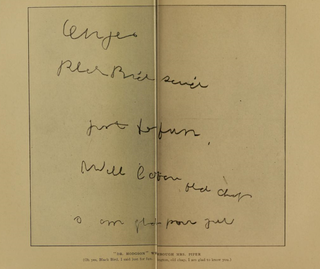
Automatic writing, also called psychography, is a claimed psychic ability allowing a person to produce written words without consciously writing. Practitioners engage in automatic writing by holding a writing instrument and allowing alleged spirits to manipulate the practitioner's hand. The instrument may be a standard writing instrument, or it may be one specially designed for automatic writing, such as a planchette or a ouija board.

A haunted house, spook house or ghost house in ghostlore is a house or other building often perceived as being inhabited by disembodied spirits of the deceased who may have been former residents or were otherwise connected with the property. Parapsychologists often attribute haunting to the spirits of the dead who have suffered from violent or tragic events in the building's past such as murder, accidental death, or suicide.

Murder by Decree is a 1979 mystery thriller film directed by Bob Clark. It features the Sherlock Holmes and Dr. John Watson characters created by Sir Arthur Conan Doyle, who are embroiled in the investigation surrounding the real-life 1888 Whitechapel murders committed by "Jack the Ripper". Christopher Plummer plays Holmes and James Mason plays Watson. Though it features a similar premise, it is somewhat different in tone and result to A Study in Terror. It is loosely based on The Ripper File by Elwyn Jones and John Lloyd.

Frederick Valentich was an Australian pilot who disappeared while on a 125-nautical-mile (232 km) training flight in a Cessna 182L light aircraft, registered VH-DSJ, over Bass Strait. On the evening of Saturday 21 October 1978, twenty-year-old Valentich informed Melbourne air traffic control that he was being accompanied by an aircraft about 1,000 feet (300 m) above him and that his engine had begun running roughly, before finally reporting: "It's not an aircraft."
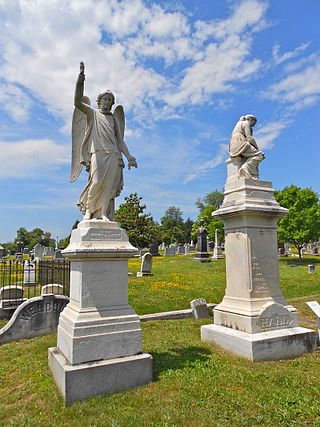
The Congressional Cemetery, officially Washington Parish Burial Ground, is a historic and active cemetery located at 1801 E Street, SE, in Washington, D.C., on the west bank of the Anacostia River. It is the only American "cemetery of national memory" founded before the Civil War. Over 65,000 individuals are buried or memorialized at the cemetery, including many who helped form the nation and the city of Washington in the early 19th century.
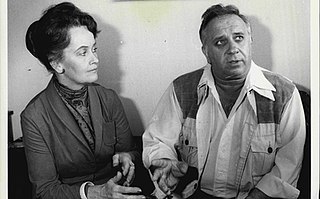
Edward Warren Miney and Lorraine Rita Warren were American paranormal investigators and authors associated with prominent cases of alleged hauntings. Edward was a self-taught and self-professed demonologist, author, and lecturer. Lorraine professed to be clairvoyant and a light trance medium who worked closely with her husband.
The Hiram Key: Pharaohs, Freemasonry, and the Discovery of the Secret Scrolls of Jesus, is a 1996 book by Christopher Knight and Robert Lomas. The authors, both Freemasons, present a theory of the origins of Freemasonry as part of their "true story" of the historical Jesus and the original Jerusalem Church.

Spirit photography is a type of photography whose primary goal is to capture images of ghosts and other spiritual entities, especially in ghost hunting. It dates back to the late 19th century. The end of the American Civil War and the mid-19th Century Spiritualism movement contributed greatly to the popularity of spirit photography. Photographers such as William Mumler and William Hope ran thriving businesses taking photos of people with their supposed dead relatives. Both were shown to be frauds, but "true believers", such as Sir Arthur Conan Doyle, refused to accept the evidence as proof of a hoax.

The gravestone of Thomas Brierley in Mellor, Greater Manchester, is one of the few in the United Kingdom known to incorporate masonic pigpen cypher in its inscription.

In West Virginia folklore, the Mothman is a humanoid creature reportedly seen in the Point Pleasant area from November 15, 1966, to December 15, 1967. The first newspaper report was published in the Point Pleasant Register, dated November 16, 1966, titled "Couples See Man-Sized Bird ... Creature ... Something". The national press soon picked up the reports and helped spread the story across the United States. The source of the legend is believed to have originated from sightings of out-of-migration sandhill cranes or herons.

Sir Arthur Ignatius Conan Doyle was a British writer and physician. He created the character Sherlock Holmes in 1887 for A Study in Scarlet, the first of four novels and fifty-six short stories about Holmes and Dr. Watson. The Sherlock Holmes stories are milestones in the field of crime fiction.

Masonic ritual is the scripted words and actions that are spoken or performed during the degree work in a Masonic lodge. Masonic symbolism is that which is used to illustrate the principles which Freemasonry espouses. Masonic ritual has appeared in a number of contexts within literature including in "The Man Who Would Be King", by Rudyard Kipling, and War and Peace, by Leo Tolstoy.

Colonel Wellington Henry Stapleton-Cotton, 2nd Viscount Combermere was a British soldier and Conservative politician.

The question of whether Freemasonry is anticlerical is the subject of debate. The Catholic Church has long been an outspoken critic of Freemasonry, and some scholars have often accused the fraternity of anticlericalism. The Catholic Church forbids its members to join any Masonic society under pain of interdiction. Freemasons usually take a diametrically opposite view, stating that there is nothing in Freemasonry that is in any way contrary to Catholicism or any other religious faith.
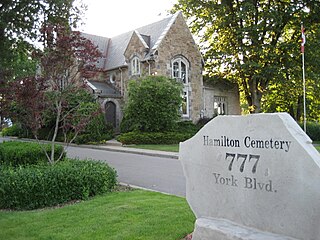
Hamilton Cemetery on York Boulevard in Hamilton, Ontario, is the oldest public burial ground in the city. It is located on Burlington Heights, a high sand and gravel isthmus that separates Hamilton's harbor on the east from Cootes Paradise on the west.

The Public Vault at the Congressional Cemetery in Washington, D.C. is an early classical revival structure built 1832–1834 with funds appropriated by the United States Congress to store the bodies of government officials and members of the public before burial. About 4,600 individuals were temporarily interred in the vault, including three U.S. presidents, First Lady Dolley Madison, and sixteen congressmen who died while serving in office.
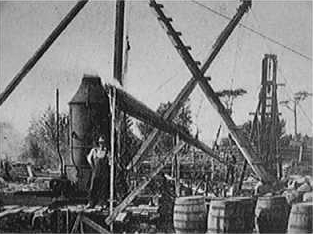
The Oak Island mystery is a series of stories of buried treasure and unexplained objects found on or near Oak Island in Nova Scotia. Since the 18th century, attempts have been made to find treasure and artifacts. Theories about artifacts present on the island range from pirate treasure to Shakespearean manuscripts to the Holy Grail or the Ark of the Covenant, with the Grail and the Ark having been buried there by the Knights Templar. Various items have surfaced over the years that were found on the island, some of which have since been carbon-dated and found to be hundreds of years old. Although these items can be considered treasure in their own right, no significant main treasure site has ever been found. The site consists of digs by numerous individuals and groups of people. The original shaft, in a location unknown today, was dug by early explorers and known as "the money pit".

Ferdinand Paleologus was a 17th-century English-Italian freeholder, sugar or cotton planter and churchwarden and possibly one of the last living members of the Palaiologos dynasty, which had ruled the Byzantine Empire from 1259 to its fall in 1453. Ferdinand was the fourth and youngest son of Theodore Paleologus, an Italian soldier and assassin who moved to England in the late 16th century.


















